Beach fence causes uproar in seaside village
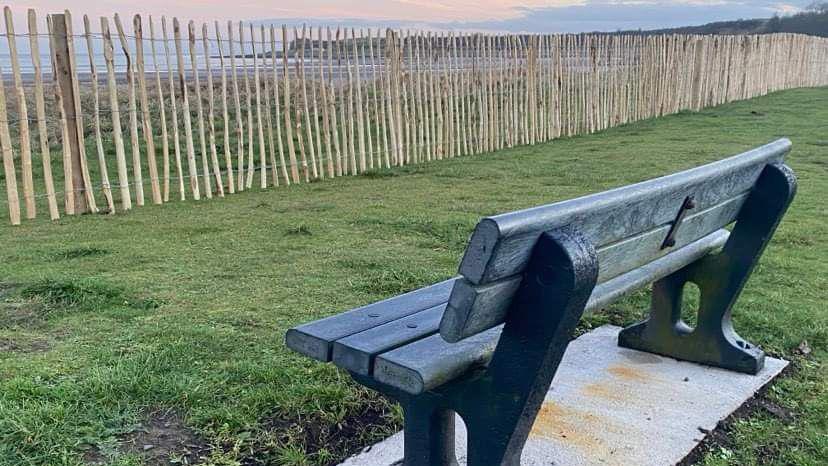
Some villagers have complained about the fence's visual impact
- Published
The erection of a fence across a large stretch of a popular beach has caused uproar and split the residents of the Galloway village of Sandhead.
About 600 metres of chestnut paling fencing has been put up by community leaders in an attempt to "hold the line" against coastal erosion.
But many villagers have taken to social media complaining about its visual impact, a reduction of parking along the beach, and concerns that tourists will be put off.
The aim of the fencing is to keep cars and campervans off the sensitive grass near the beach and allow it to re-wild, strengthening its resilience to floods and other damage.
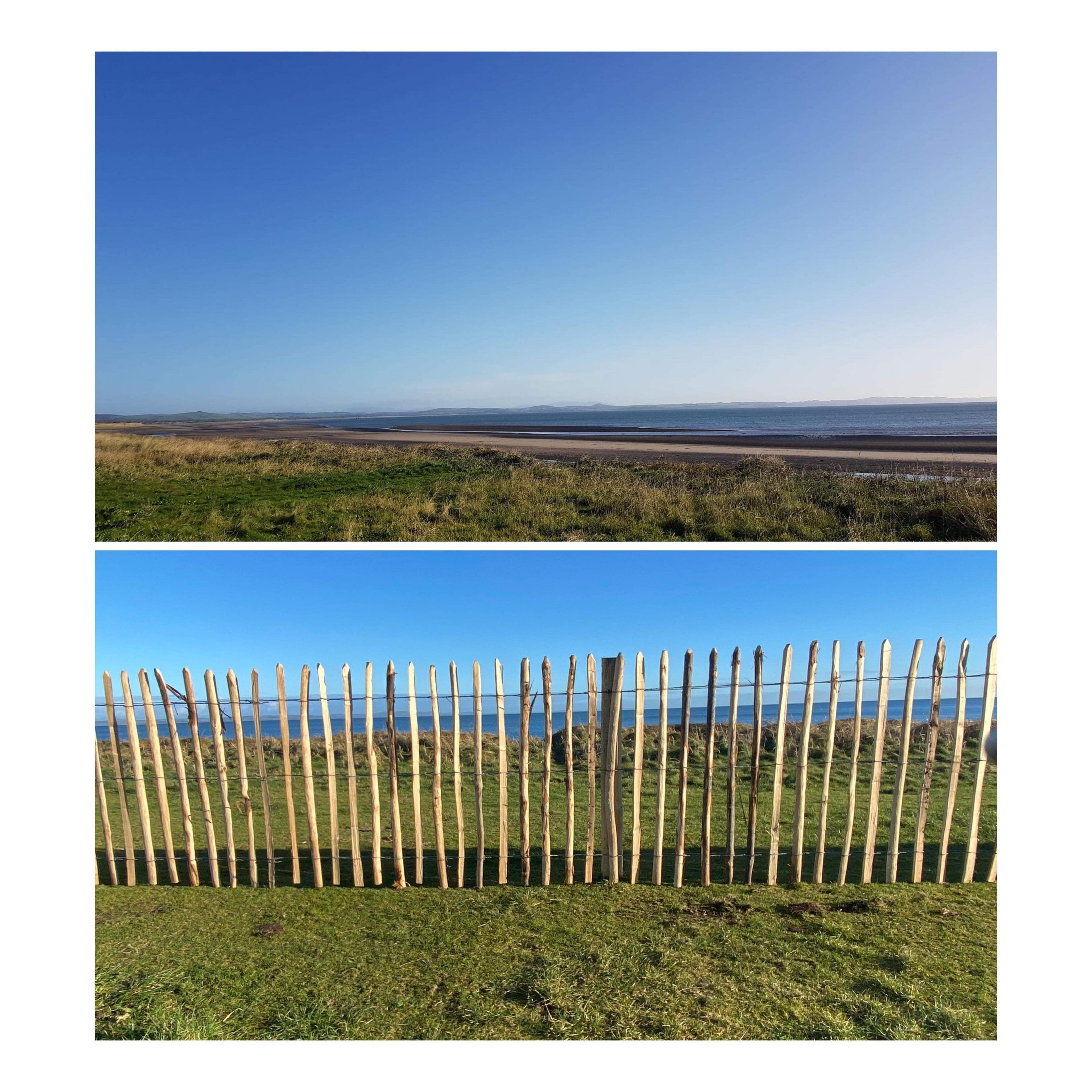
The view of the beach before and after the fence was put up
Stoneykirk Community Council decided to explore options to protect the village’s coastline after Sandhead Beach suffered flooding during Storm Barra in December 2021.
A plan emerged to re-wild the lowest-lying parts of the shore after the council held a two-year public consultation involving Solway Firth Partnership, Dumfries and Galloway Council, NatureScot and Glasgow University experts.
Notice boards and signage was installed, door-to-door surveys carried out and community council meetings held, though the council says these often attracted only 10 or so people from the population of about 500 residents.
The community council’s resilience lead Alexander Whannel to BBC Scotland’s Lunchtime Live programme: “We decided the best way forward was to stop cutting part of the grass to allow it to re-wild and hopefully this would sustain the shore."

Alexander Whannel said the idea is to protect the shoreline
"Sandhead was a great area for birds, butterflies and moths. We used to have newts, toads, everything along here," Mr Whannel said.
"They’ve all disappeared because of overuse so we decided this would be an ideal opportunity to see if we can bring that back and it would be an enhancement for the village and visitors."
Andrew McKenzie, who is the fifth generation of his family to run McKenzie’s Convenience Store, less than 100 metres from the beach, supports the project.
‘We’ve had two massive big storms where the sea was right on to the swings in the park," he said.
"My house is at the bottom and the water was up to the gates of the drive and over the main road.
"It’s frightening to think it might get worse if the coastal erosion is allowed to go on."
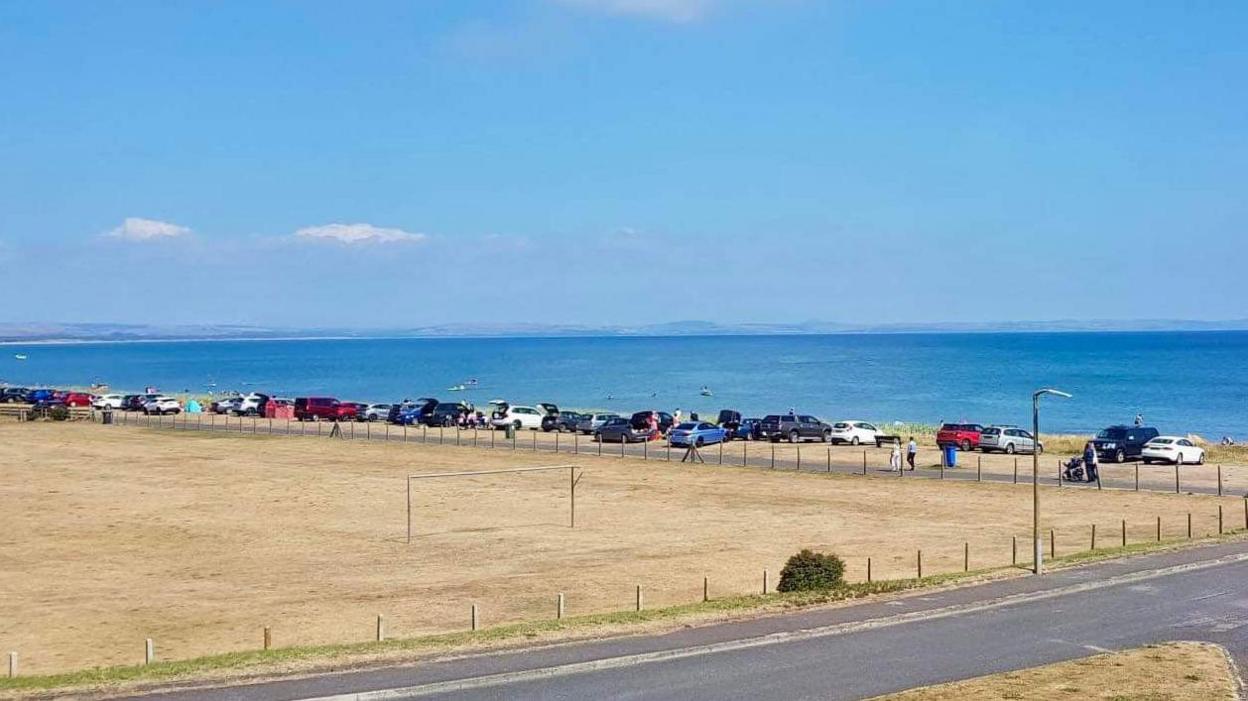
The aim is to stop cars and caravans parking on the grass
The one-metre tall fence is intended to remain in place for about five years to see if vegetation takes hold.
But since being installed last month, villagers told BBC Scotland News it had been "extremely divisive".
The fence stops caravans and other vehicles parking on the grass next to the sand but access points allow people to walk through and those in favour point to the added benefit of new rubber mats which make it easier to push prams and wheelchairs.
One dog-walker said keeping cars off the sensitive shoreline was a good idea but another local was worried that tourists would not be impressed by having to see the beach through a line of sticks.
"It’s going to take a lot of money from the area because a lot of tourists come," she said.
"I see the fence all the time and it’s horrible.’
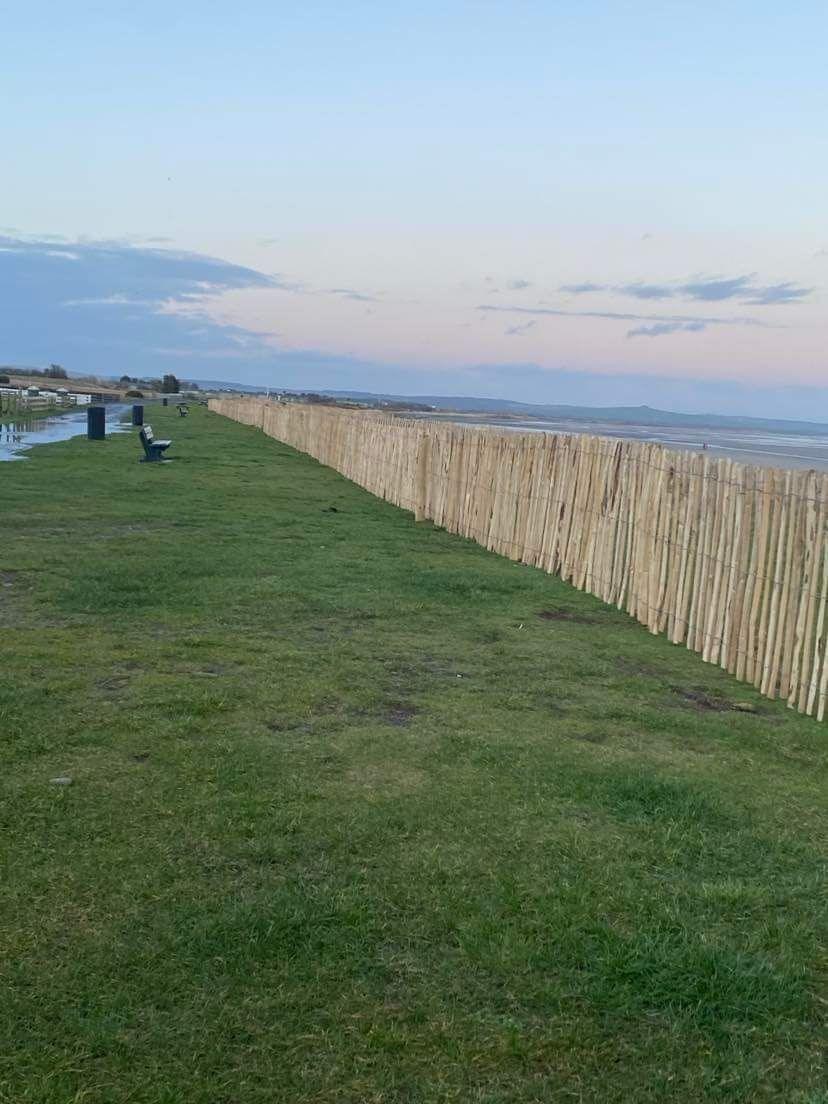
The fence is about 600 metres long
Matthew Young, the new chairman of Stoneykirk Community Council, insists Sandhead still wants visitors.
"We get many RVs and campers and we left room in the plan at the right hand side where there are bigger spaces where they can park," he said.
"It’s basically to reduce the amount of damage. It’s not to prevent people coming here."
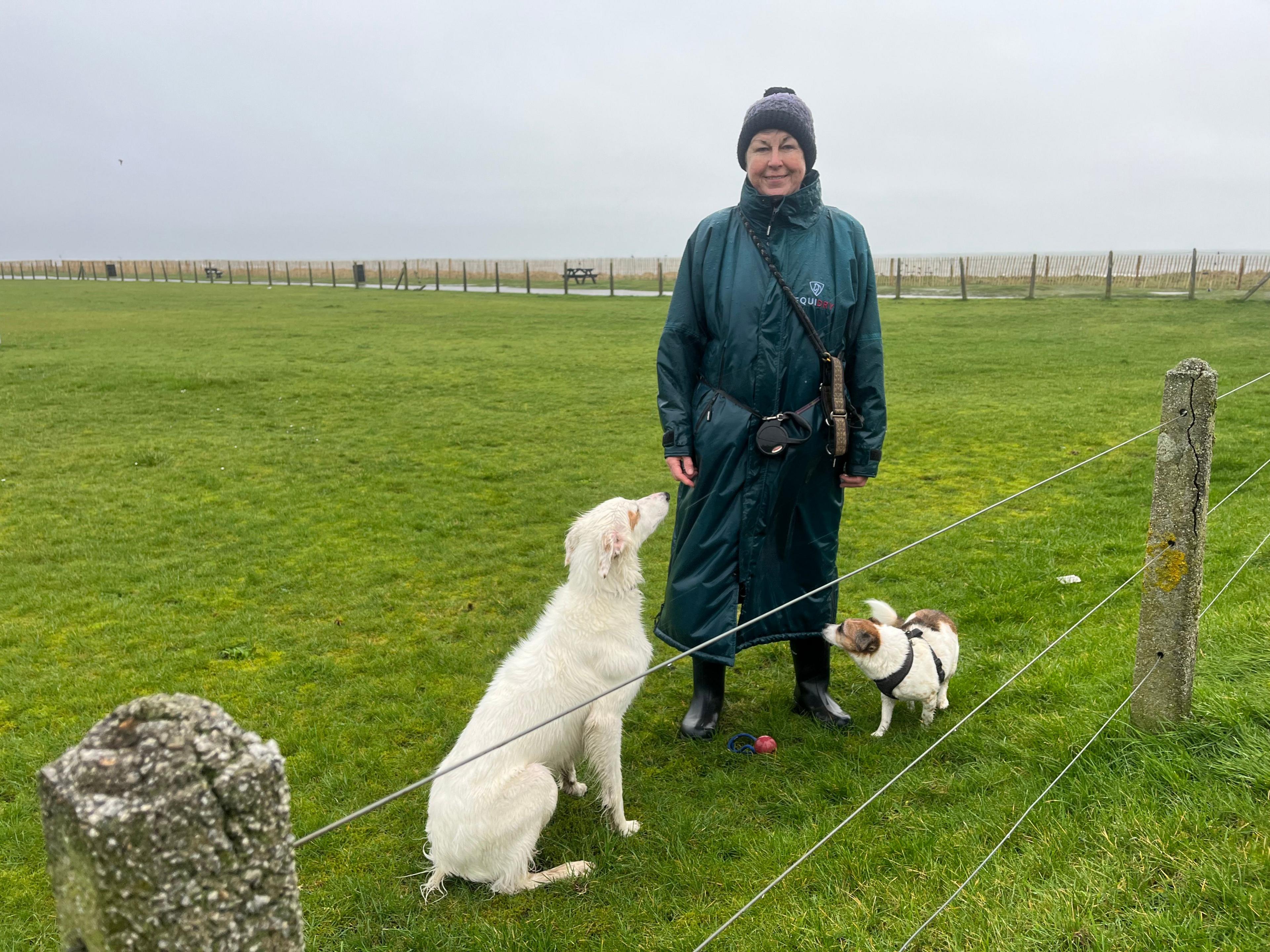
Claire said the process had proved extremely divisive
So will it work?
Sue Dawson, a professor of hazard geoscience at the University of Dundee, says there is precedent suggesting it will have some success.
"I live in St Andrews and we’ve gone through a similar process here where dunes were being trampled by people running up and down," she said.
"There’s a similar line of fencing around the dunes and actually the marram grass takes hold pretty quickly and stabilises the sand.
"It doesn’t completely stop the erosion but certainly provides a line of defence."
As Sandhead’s new look beds in somewhat uncomfortably, community councillors insist the two-year consultation on the scheme was open and fair, and that personal criticisms directed at local volunteers were very disappointing.
"When the last staples of the fence were going in this all kicked off for some reason, although everybody had been consulted," Mr Whannel said.
"I just switched off looking at Facebook. The community council page that I run was getting some getting some disgusting photos coming into it."
A spokesperson for Dumfries and Galloway Council said the project was funded as part of the Scottish government commitment coastal change adaptation plans.
They said vehicles parking along the seafront had led contributed to erosion as well as a loss of biodiversity.
There has also been a history of flooding in the area, they said.
A NatureScot Spokesperson said: ‘The restoration of the habitat and in particular the increase in vegetation at the site will help combat the effects of climate change and storm impacts on this coast.”